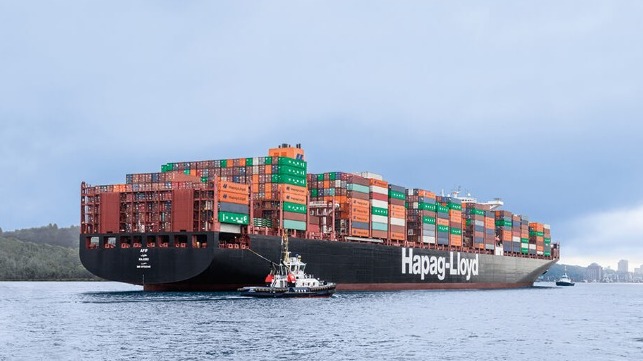Hapag Sees Cooling Market with Supply Growth Twice Demand in 2023

Hapag-Lloyd became the latest among the major container shipping lines to report what management called an “extraordinarily strong business performance,” while also telling investors that it sees indications that the market is “cooling off.” The German shipping giant reported that its profits tripled in the first half of the driven by significantly improved freight rates which gave the company margins above 50 percent.
CEO Rolf Habben Jansen highlighted several factors contributing to the company’s strong results. He said that the supply chain disruptions had further intensified during the first half of 2022. Coupled with continued strong demand he said capacity remains tight across the industry resulting in a low level of ideal ships and high charter rates. He said that these factors along with the longer voyage times as a result of port congestion and delays contributed to an essentially flat volume of approximately 6 million TEU in the first half compared to the year ago. However, that was better than others in the industry including Maersk which reported single-digit percent volume declines for volumes so far in 2022.
While saying that the exceptional freight rate environment led to the strong earnings performance for Hapag, Habben Jansen said the average freight rate increase was mainly driven by stronger long-term rates. “We are currently seeing the first signs in some trade lanes that spot rates are easing in the market,” he told investors.
The strong financial performance also came despite strong cost increases in the operations. Hapag experienced significantly higher expenses for container handling, including charter prices and a 67 percent increase in the average bunker price. Overall transportation expenses were up by 22 percent offsetting some of the gains in freight rates. Habben Jansen also cautioned of uncertainties ahead including the ongoing supply chain disruptions, as well as continuing impact both from the war in Ukraine and the COVID-19 pandemic.
“Nevertheless, we are expecting a strong second half of the year,” Habben Jansen reaffirmed to investors. Last month, Hapag raised its forecast for the full year 2022 projecting earnings of between $17.5 and $19.5 billion (EBIT). The company is also producing a strong cash flow generating free cash flow of $9.5 billion in the first half of the year. Hapag’s total liquidity reserve is now just over $11 billion.
The company looks to continue its investments including further acquisitions now that it has closed the purchase of Deutsche Afrika Linien and before that regional carrier NileDutch. In an effort to control costs in their current operations he said they are actively managing the charter fleet including purchasing secondhand vessels. They are also rolling out a fleet upgrade program to increase fuel efficiency to help manage fuel costs that skyrocketed in 2022.
While expecting a cooling off from the strong industry performance, Habben Jansen said he does not believe that demand or volumes will decline dramatically. Their forecast is that economic growth is likely to slow with high inflation and geopolitical risks weighing on consumer spending. As a result, he forecast that “The currently still strained situation in the global supply chains should improve after this year’s peak season.”
Looking toward 2023 and beyond, Habben Jansen highlighted a changing supply/demand curve for the industry based on the strong shipbuilding orders in 2021 that have carried forward into 2022. Hapag said the industry ordered 4.2 million TEU of capacity in 2021 with an additional 1.7 million TEU so far this year. As of August 2022, they estimated that the orderbook is equivalent to 28 percent of the industry’s current capacity.
“Slower expected demand growth and the influx of additional tonnage from 2023 onwards, should ease the thigh capacity situation,” Hapag said in its presentation to investors. The company is forecasting volume growth will drop from a high of 7 percent in 2021 to a low of 2 percent this year before rebounding to 3 percent next year. On the supply side, however, they forecast that capacity would increase at twice the rate of demand in 2023 creating a 7 percent increase in the supply of transport capacity.
